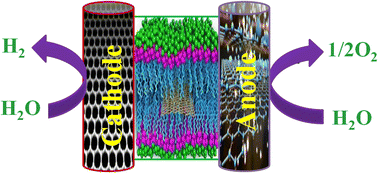Recent development and challenges in fuel cells and water electrolyzer reactions: an overview
Abstract
Water electrolysis is the most promising method for the production of large scalable hydrogen (H2), which can fulfill the global energy demand of modern society. H2-based fuel cell transportation has been operating with zero greenhouse emission to improve both indoor and outdoor air quality, in addition to the development of economically viable sustainable green energy for widespread electrochemical applications. Many countries have been eagerly focusing on the development of renewable as well as H2-based energy storage infrastructure to fulfill their growing energy demands and sustainable goals. This review article mainly discusses the development of different kinds of fuel cell electrocatalysts, and their application in H2 production through various processes (chemical, refining, and electrochemical). The fuel cell parameters such as redox properties, cost-effectiveness, ecofriendlyness, conductivity, and better electrode stability have also been highlighted. In particular, a detailed discussion has been carried out with sufficient insights into the sustainable development of future green energy economy.

- This article is part of the themed collection: 2022 Reviews in RSC Advances


 Please wait while we load your content...
Please wait while we load your content...